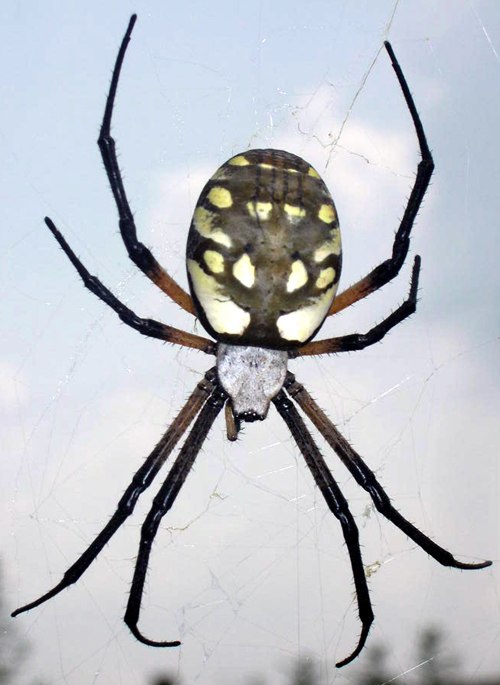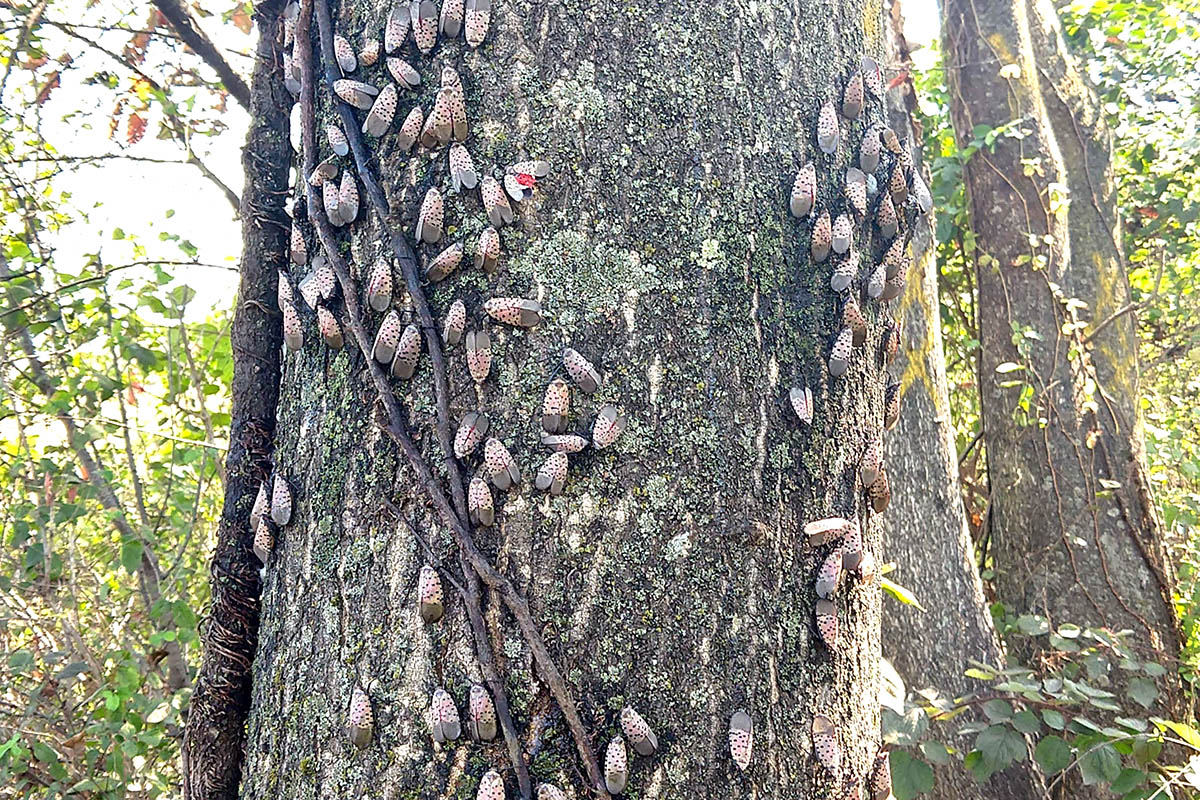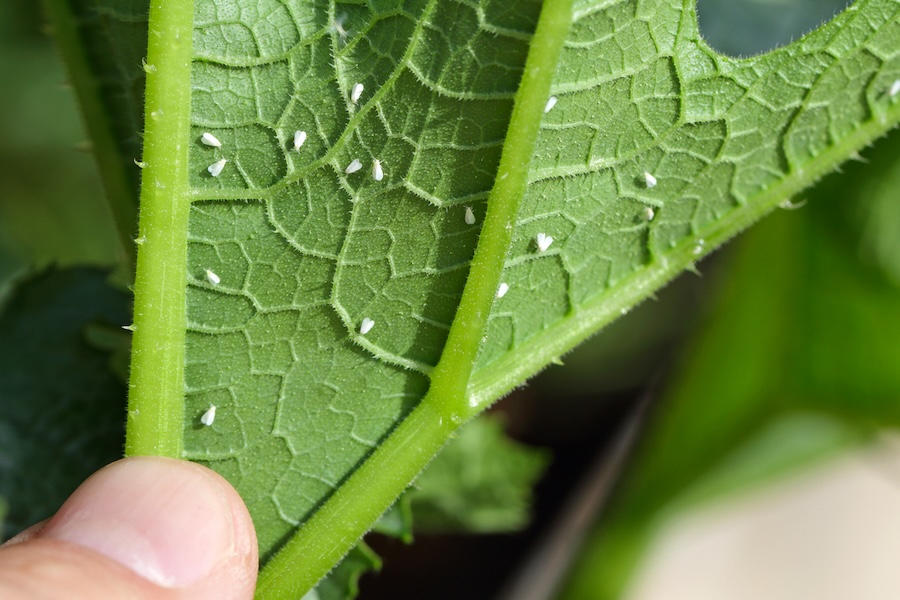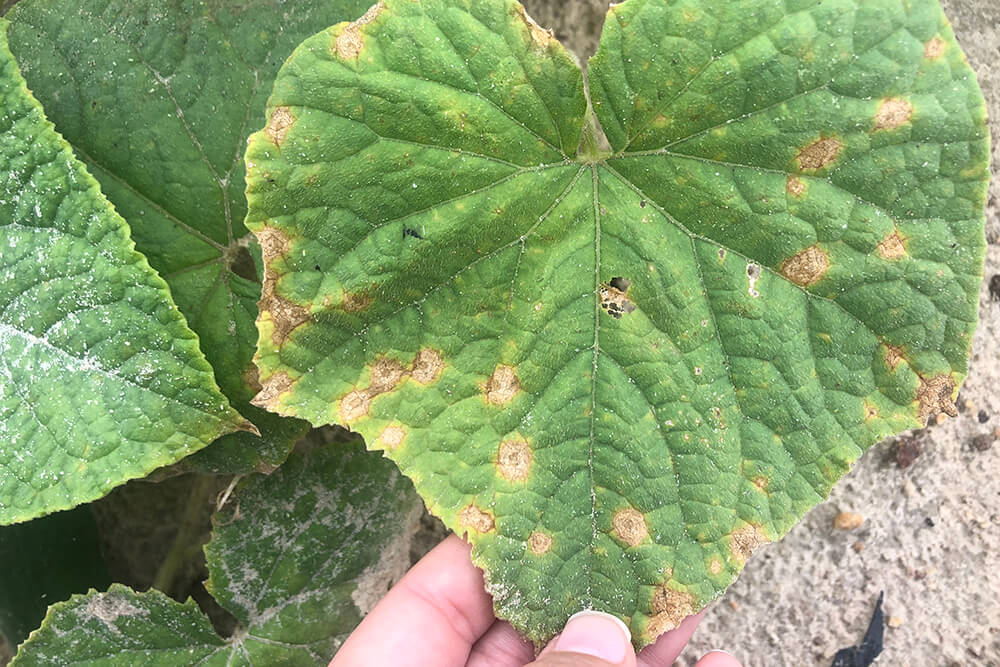In the sunny days of spring, you won't even notice the tiny young of some beautiful spiders emerging in your garden. But keep watching. By late summer or early fall, you may be able to see these large, striking spiders as they trap and eat insect pests.

Volume XXXI |
The golden garden spider (Argiope aurantia) can be found from southern Canada through the lower 48 United States, Mexico and Central America as far south as Costa Rica.
Garden spiders are fairly easy to identify due to their distinctive yellow and black abdomen and silvery-white head. The female sits upside down in her web with her legs in an "X" formation.
At first glance, you may notice the zigzag pattern characteristic of a garden spider web. This pattern is believed to help strengthen the web, camouflage the spider or attract insect prey.
Big
Garden spiders are big. Really big. The adult female's body can be over an inch long. She's much larger than the male, which is less than a third her size. The male can often be found to the side of the female's web or in a small web nearby.
Around September or October, the female garden spider will lay her eggs in an egg sac that looks like a brown fig. She attaches the sac to one side of her web, where she will watch it until the first frost.
The eggs hatch in the fall. But the spider hatchlings remain in the cozy egg sac to overwinter until spring. The garden spider's life span is a little more than a year.
Are these huge, gorgeous spiders poisonous? All spiders are. They're carnivorous, and they use their venom to capture prey. Most spiders, however, will bite only when provoked.
Rarely bites
Garden spiders, in particular, aren't aggressive. If you disturb it, a garden spider will vibrate the web and try to look larger to discourage predators. If this doesn't work, it will drop to the ground and hide.
The garden spider will use its venom only as a last resort, because it won't be able to capture a meal until it can produce venom to replace what was lost.
Garden spider venom isn't toxic to humans, anyway. If one does bite you, it should cause only brief discomfort and minor redness in the area bitten.
The benefits of having a garden spider in your yard or garden greatly outweigh the negatives. As opportunistic feeders, they eat many insect pests, such as moths that can infest your garden or flies that can invade your home. These magnificent spiders are welcome alternatives to pesticides.








